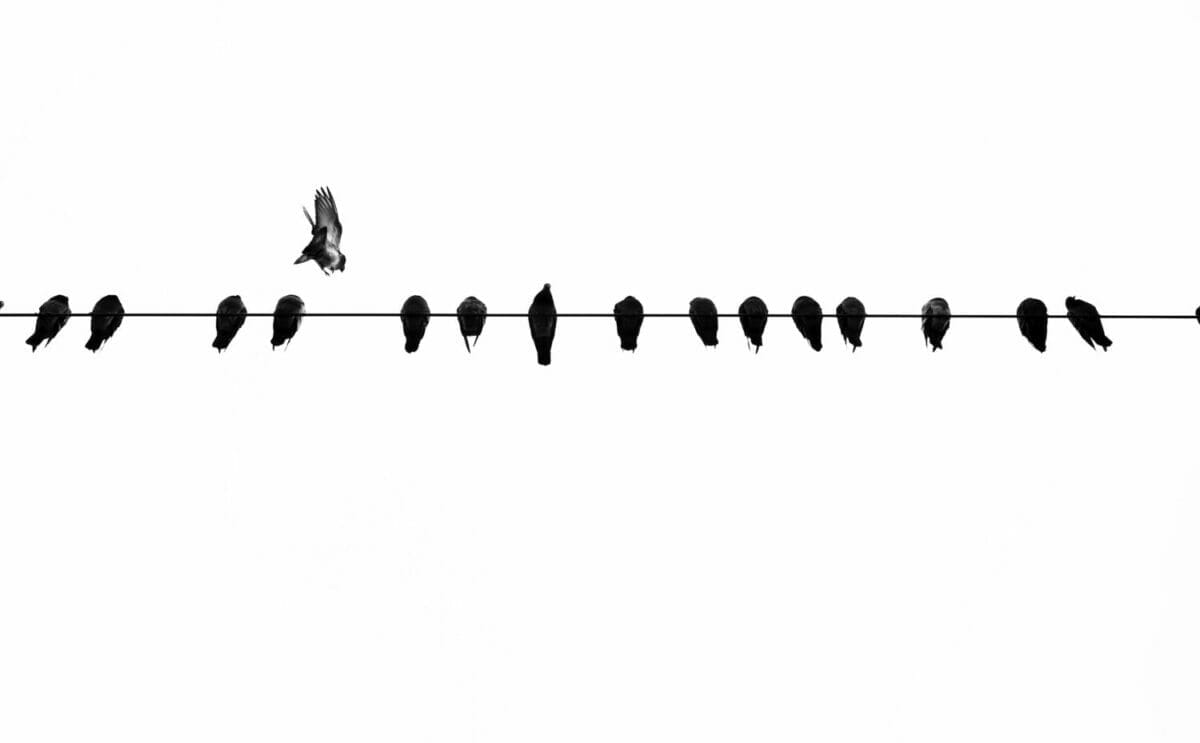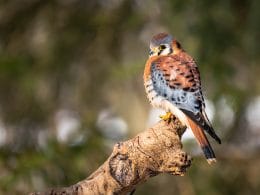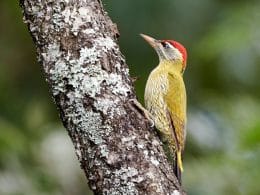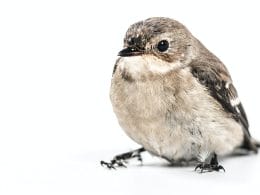The phrase bird on a wire has come to mean many different things in popular culture. For some, it references the symbolic freedom of birds and for others, it means being detached and having a wide viewpoint or metaphor for the dangers of life. Whatever your viewpoint, small birds sitting on power lines is a common sight but why do birds do it? It is as simple as because they are there? In this post, we will be investigating why birds sit on power lines and how it can possibly be safe.
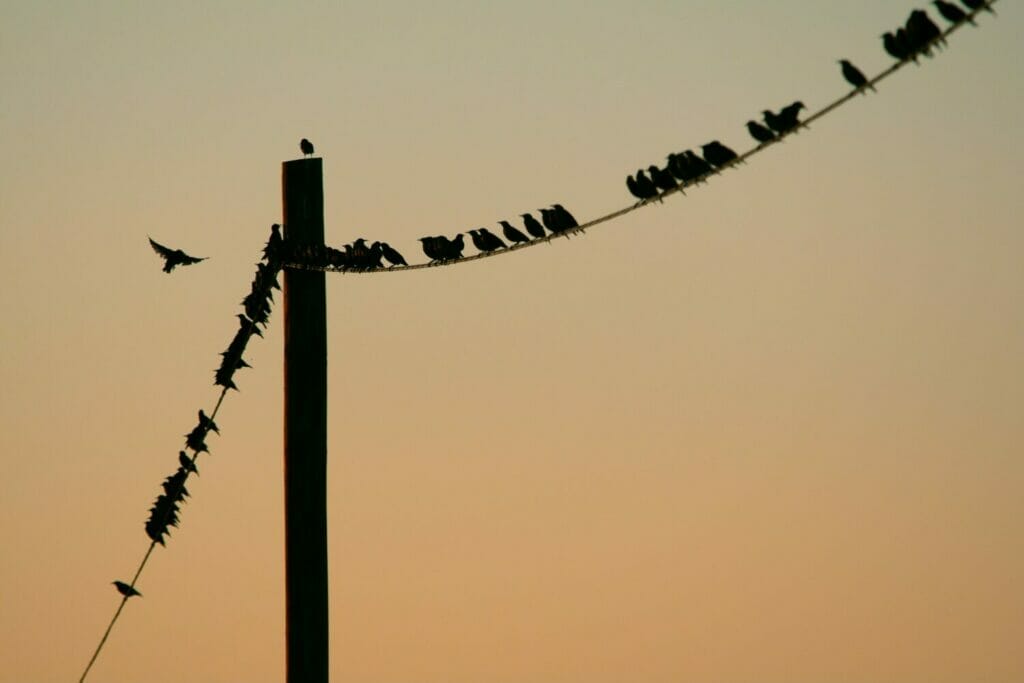
How do birds perch?
Perching birds (passerine classification), all have the same arrangement on their feet. They have 4 toes, 3 of which point forwards and one backwards. This enables them to grip on to branches, wires and other perches. In addition, these songbirds also have tendons that will tighten automatically when they land, meaning they have a secure hold on the perch.
Why do birds perch?
There are lots of reasons why birds sit in this secure position and most of them are common sense.
- rest
- sleep
- security
- preening
- socialising
- observing
- eating
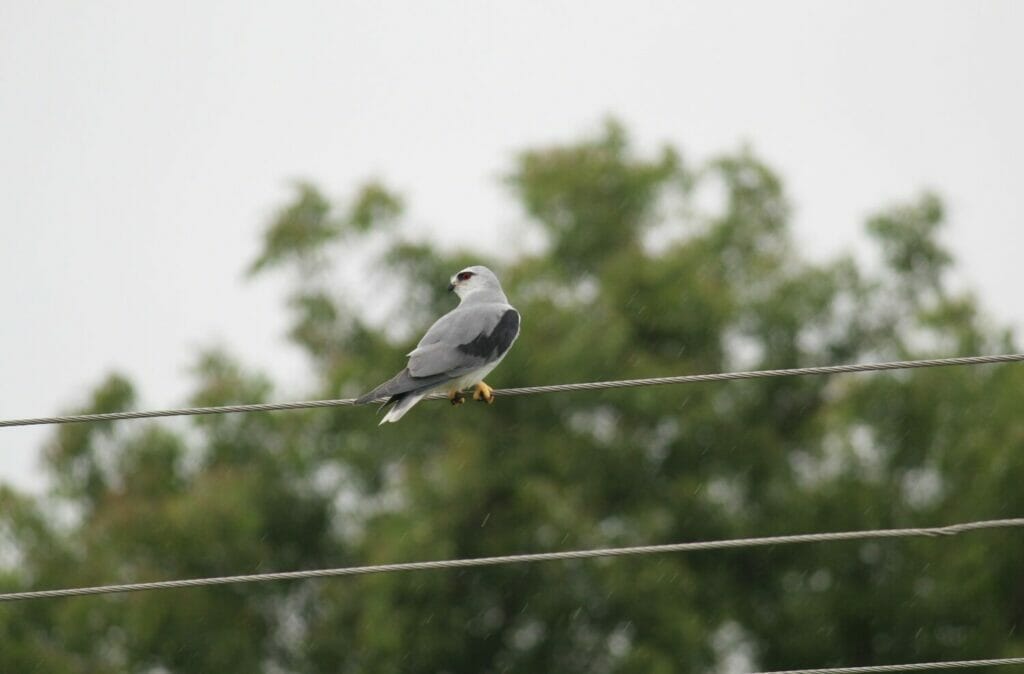
Why do birds sit on electricty wires?
There are lots of reasons why birds choose to sit on electricty wires and they correspond with the reasons why they perch in the first place. So, the simple answer is – because they are there. But we can dig a little deeper.
Shape
Electricity wires look and feel similar to natural places like branches where birds would normally or otherwise perch.
Safety
Birds often hide away in trees and other foliage to hide from potential predators. Power lines offer similar protection for exactly the opposite reason. The visibility they offer makes it much more difficult for flying predators to catch birds unawares. It is also practically impossible for ground dwelling predators to reach the birds. Even if a very agile feline or snake could climb the pylon and make their way across the wire, the birds would be long gone.
There is also the old adage safety in numbers, which applies here. Several (or more) birds sitting on a wire are less of a target to a passing raptor than just one. They also have the advantage of more eyes looking out for trouble.
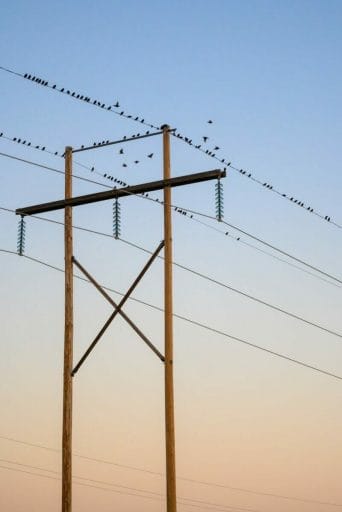
Hunting
The visibility advantage works twofold for these passerines. From the wires, they can see all manner of winged prey flying around. This is particularly helpful for birds like swallows and flycatchers that catch their food while it is in the air.
Warmth
The flow of electricity along the wire causes the air surrounding it to heat up slightly. This is a great advantage to small birds on cold days.
Migration
It is common for birds to migrate in groups and electricity wires provide a good gathering site for them before they leave. In the spring and fall, you should be able to see larger groups of birds on wires as they prepare to leave.
Courtship
At the start of the breeding season, when males are trying to attract a mate, they may use a power line as a sort of stage. It is somewhere visible that they can sing their songs for the females.
Socialization
Most passerines enjoy the company of other birds, even of other species. Wires are great places for them to meet and socialize.
Resting
Birds, like all animals, need to rest. Electicity wires give them an opportunity to have a few minutes to sit and recharge in relative safety. They can also sleep in safety due to that unique configuration of their toes and their ability to lock into place.
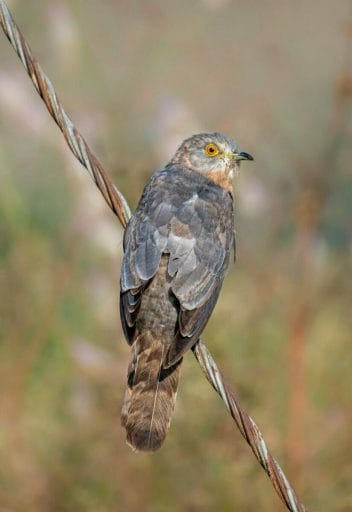
How are birds safe on electicity wires?
This is something I have often wondered when I have been watching birds on a wire. It is drilled into us from childhood that any electrical equipment like power lines, are dangerous and should be avoided. So how are birds safe? The simple answer is twofold.
Firstly, the birds are not touching the ground. Electricity is always looking to move in the easiest way possible to the ground. As long as the bird is just sitting on a wire, the electricity won’t move through them.
Secondly, birds’ bodies are not good electrical conductors. Electricity always flows along a path offering the least resistance. The feet of birds do not offer any kind of shortcut so the electricity just keeps flowing along the wire beneath them.
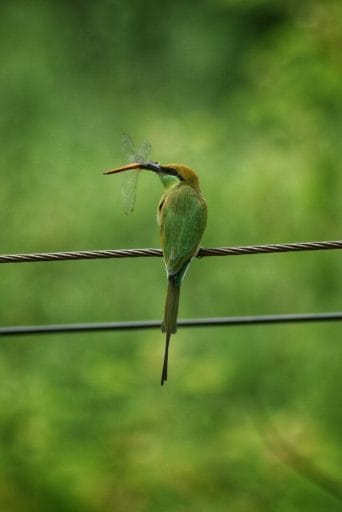
Do birds ever get electrocuted on wires?
Yes, they do. They are only safe when it is just them, sitting on an electricity wire. They may be electrocuted in the following circumstances:
Making contact with the pylon
If a bird is sitting on a wire and touches the supporting pole, then the electricty will look to flow to the ground – through the bird.
Making contact with 2 wires
If a bird is sitting on one wire and makes contact with another wire above it, the electricity will move from one wire to another, again right through the bird. This could happen if bigger birds are on the wire and stretch their wings as they prepare to take off. This is why you normally only see small birds sitting on wires.
Making contact with another bird on another wire
If birds are socializing, feeding or courting and they make contact with each other while sitting on different wires, for the same reason as above they are in danger of electrocution.
Can birds damage electricity wires?
The danger of electricity flowing from one wire to another, or along the utility pylon, is the reason why wires are spaced apart. Electricity companies are cognizant of the danger to birds and this, coupled with the fact that any electricity outages are damaging to their customers, is why these energy companies have worked to minimize such risks.
There is some anecdotal evidence that birds may damage electrical installations as they look to find nesting places. I have seen martins and swallows nesting in the hollow ends of support pipes on electricity poles. They may also damage the wires themselves by gathering nesting material. Pulling at the insulation on the power lines is probably not such a great idea.
There is also a possibility of woodpeckers damaging the support poles by trying to excavate nesting holes.
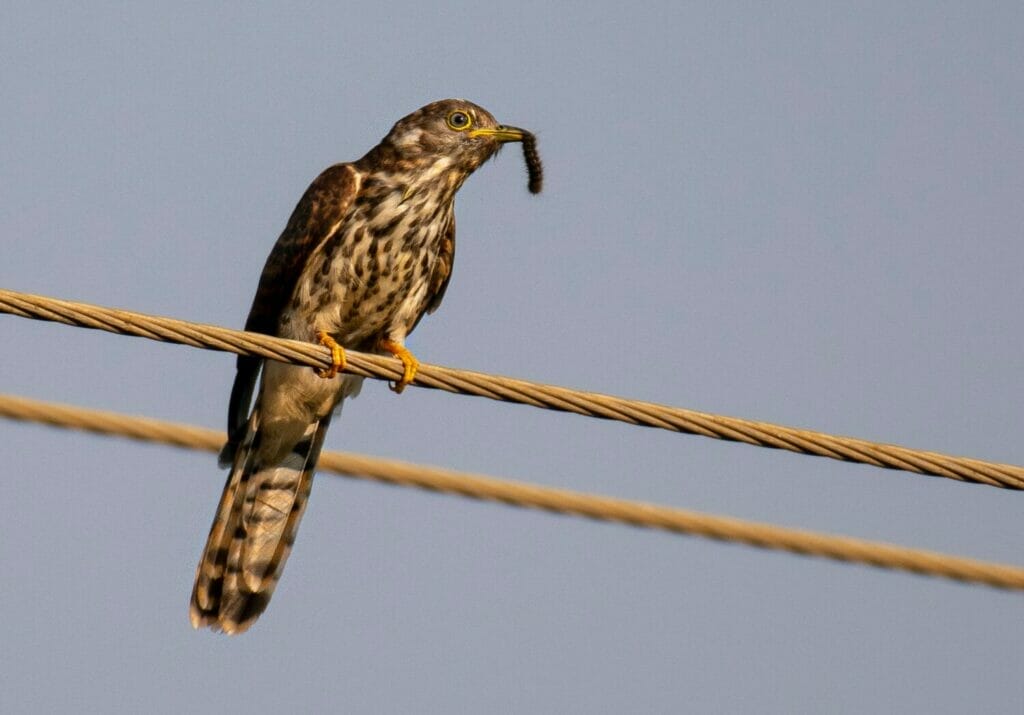
What birds sit on power lines?
We only really see smaller birds perching on power lines. Reasons listed above include the formation of the toes enabling them to grip and that larger birds are in danger of touching wires. As only birds with grasping feet are able to effectively hold onto the wire, this then excludes many waterbirds. Ground dwelling birds are also unlikely to fly up so high. We have already said passerines are the biggest group of birds likely to be seen on wires but you could also expect to see swallows, martins, doves, small raptors, starlings, blackbirds and other native songbirds like bluebirds and kingbirds.
What about birds on the utility poles?
We often see larger birds sitting on the utility poles rather than the wires. This is obviously because they are a larger structure and more suited for bigger birds to sit on. Birds may use these poles for nesting, hunting and roosting. Ospreys are a great example of very large birds nesting within the metal construction of large pylons. Other birds that may use pylons and poles are hawks, eagles, heron, corvids and parrots.

FAQ
This can usually be seen when on windy days. For the same reason birds fly into the wind, they sit facing the wind. Their feathers will be blown flat rather than all over the place and this improves their wind resistance. On a very still day, birds are more likely to sit facing different directions
Yes, passerines can sleep on power lines. This is because of the configuration of their toes which enables them to automatically grip the wires, even when they are asleep.
No, they would be very vulnerable to raptors like owls. It is much safer to be hidden away in a tree at night.
The simple answer to why birds sit on power lines is because they are there, giving the birds a clear view of the world around them. A distinct adavantage for any bird that might be prey or be a predator. Birds sitting on lines will be different at different times of the year so it is always good to consider what they are doing there when you see them. Are they gathering for migration, warmth or courtship? Birds, as ever, are never boring even when they are just sitting on a wire.




